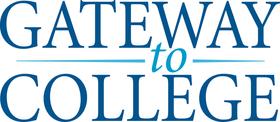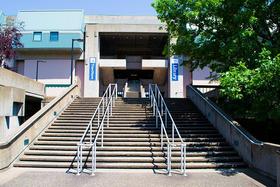In 2012, the President’s Council of Advisors on Science and Technology issued a dire warning that if the United States did not boost programming to produce one million more graduates in science, technology, engineering, and math (STEM), the nation would lose its status as the leader in those fields. Since then, several national science organizations, including the National Research Council, the National Academies of Sciences, and the National Academy of Engineering, have called on community colleges to lead STEM education to keep up with demand.
High on the list of priorities is preparing students early for STEM studies. Experts agree that children should be exposed to STEM career pathways in elementary school and should have continued exposure through their middle school and high school years. Classroom experiences are essential, but George Boggs, the CEO Emeritus of the American Association of Community Colleges, posits that visits to college campuses, involvement in research opportunities, advanced STEM studies in high school, science fairs, and summer camps are also necessary to get schoolchildren excited about careers in STEM.
This video illustrates that engineers, scientists, cybersecurity experts, and other STEM professionals are in demand.
According to Boggs, another critical component in devising successful STEM programs is developing curriculum articulation between high schools and community colleges to reduce the number of students taking remedial courses once they get to college. In math especially, community college students demonstrate a lack of preparedness that hinders many of them from pursuing careers in a STEM-related field. Additionally, Boggs points out that the perception that STEM careers are not friendly to women and minorities must be changed if the nation is to keep pace with the demand for highly skilled, highly-trained workers. Fortunately, there are dozens of programs available to help community colleges expand their STEM offerings, and many have taken advantage of the opportunity.
States Offer Free Tuition for STEM Majors
Some states are offering free tuition as part of the push to encourage more college students to study in a STEM field. In New York, the STEM Incentive Program provides students who graduate in the top ten percent of their high school class with a scholarship to cover their tuition expenses. The scholarship is good for up to five years after graduation. It can be used at any institution within the State University of New York or City University of New York systems.
In Tennessee, the free tuition plan has been taken a step further. Beginning in 2015, any high school graduate in the state can attend a community college or trade school tuition-free. The program, funded mainly by the Tennessee Lottery, aims to increase the state’s number of college graduates from 32 to 55 percent in its first decade. And since community colleges and technical schools in the state offer many STEM programs, providing tuition-free access to these schools will also bring more people into the STEM workforce.
STEM Grant Opportunities Encourage Program Development
Community colleges have dozens of grant programs to build STEM programming from the ground up and encourage more students to pursue STEM careers. They include:
- Louis Stokes Alliances for Minority Participation – This program focuses on increasing the number of minority and underrepresented students in STEM disciplines.
- Research Experiences for Undergraduates – Grant funding to pay for student expenses related to conducting scientific research.
- Advanced Technological Education – Grant support for technical education programs and faculty development.
- NSF Scholarships in STEM – Provides funding to community colleges to support scholarship programs for academically gifted STEM students.
Many more programs are available to community colleges to prepare the workforce for a future economy that is much more globalized and far more competitive. From added academic majors in STEM fields to multi-million dollar science and technology centers, community colleges are increasingly becoming hotbeds of STEM studies.
This video also illustrates the demand for STEM subjects.
Early College Academy in Connecticut
Norwalk Community College (NCC) has launched two major STEM initiatives in recent years to boost the number of students prepared to meet the upcoming demand for STEM-related skills in Connecticut’s workforce. Estimates are that over 100,000 jobs in STEM fields will need to be filled in just the next four years in Connecticut alone, while by 2020, 90 percent of jobs in the state will require STEM skills.
In 2011, the college received a massive $12.1 million federal grant to fund the Connecticut Health and Life Science Initiative. NCC is also one of only three community colleges in the United States to participate in the STEM Regional Collaborative Initiative, which aims to create college-to-career pathways for STEM graduates by increasing coordination between community colleges and local businesses that need STEM-educated workers.
Most recently, however, NCC IBM and the Norwalk Public Schools launched the Norwalk Early College Academy. This six-year program starts the first year of high school and continues until participants graduate with an associate’s degree in applied science from NCC. Students in the program will be matched with mentors from IBM who will provide internship opportunities and work-study programs. Additionally, because the program has plenty of external funding, participants can get their associate’s degree at no cost. The first round of students will begin the program this fall.
New York City’s BTECH
The cooperative program between Norwalk Community College and Norwalk Public Schools is not the only one ready to prepare students for STEM careers. In the nation’s most extensive public school system, New York City, various agencies, including Queensborough Community College and the City University of New York, are launching a six-year program called BTECH – Business Technology Early College High School. BTECH is explicitly designed to give students an edge in STEM-related career fields. Like its sister program in Connecticut, New York City’s plan allows students to earn both a high school diploma and an associate’s degree. Both programs have a curriculum specifically designed to meet entry-level job requirements in STEM industries, and both heavily rely on real-world experiences so students can apply what they learn in an actual workplace setting. One difference between the programs is that students in the New York City program begin college-level studies in their first year of high school. In contrast, Norwalk students have college-level experiences backloaded to the final years of high school.
Delaware County Builds Massive STEM Complex
Delaware County Community College (DCCC) in Media, Pennsylvania, is at the forefront of STEM education. The college recently completed a $60 million STEM Complex that houses programs in geothermal heating, robotics, environmental engineering, and other high-demand, 21st-century career areas.
DCCC’s STEM complex is representative of the rapidly changing scope of a community college education. Not long ago, many technical jobs didn’t require education or training beyond high school. However, this is certainly no longer the case. Jobs in STEM-related fields now require an associate’s degree or certification at the very least, and colleges like DC are cashing in by designing the programs and building the facilities to offer that training. Can DCCC prepare workers for 21st-century careers and maintain its relevance as workforce demands require it to change its focus to STEM preparedness?
Improving Upward and Downward Articulation
The programs above typify the need for community colleges to work closely with high schools, businesses, and industry to align knowledge and skills expectations. As the intermediary, community colleges must work with high schools to ensure students coming to them have the knowledge and skills they need to succeed in college. Similarly, community colleges must communicate with businesses and industries to ensure their students have the knowledge and skills they need when they leave college for the world of work. As evident by the breadth and depth of the six-year programs in Norwalk and New York City, this will require a lot of effort by all parties involved. However, that effort will pay off in the long run because the improved articulation of curricula and outcomes from high school to college to the business sector will result in a workforce with the education, training, and know-how to succeed in a highly technological economy.
This video illustrates the success of a STEM program.
The role of community colleges in preparing the future workforce has a particular significance for minorities, first-generation college students, and people with low incomes. Community college often represents these populations' best or only access point to higher education. With more and more community colleges offering STEM degree programs and certifications, these underrepresented populations have a more straightforward pathway to a well-paying job with a fantastic opportunity for growth over the next two decades. In that regard, these programs aren’t just a means by which the nation’s workforce can adapt to modern-day demands; they are a vehicle by which underrepresented groups can enjoy some measure of social and economic mobility.
Questions? Contact us on Facebook. @communitycollegereview















